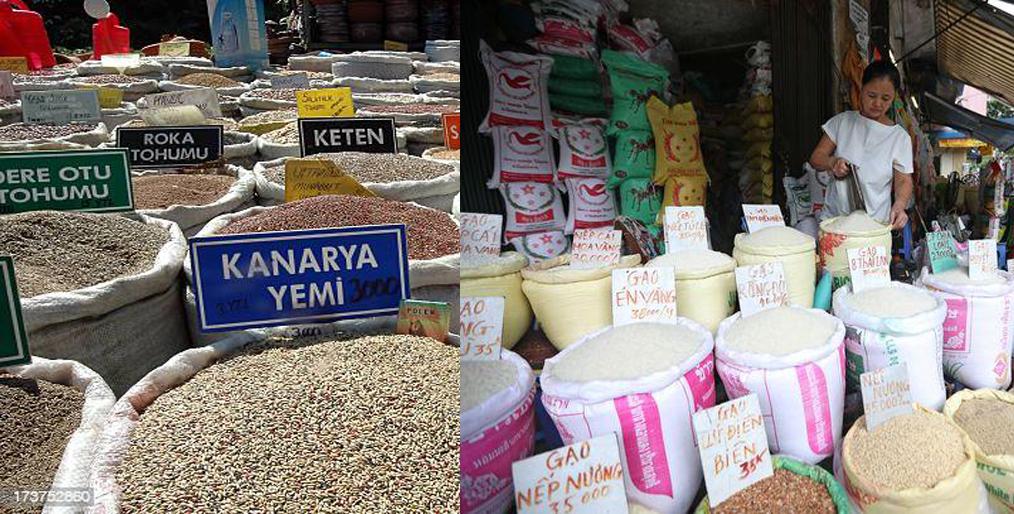
[caption id="attachment_7999" align="aligncenter" width="1014"] File Photo[/caption]
Demand for improved packaging, branding and labeling of rice is expected to increase in Asia. Due to the rapid income growth in Asia, consumers are increasingly willing to pay for high quality and healthy products. Second, regulators are becoming more stringent in their food safety policy regarding product packaging and labeling features. Third, external features are also being used to differentiate products to meet the needs of consumers in the urban food market.
Consumers cannot directly see the quality of some products. For example, in the case of experienced products, consumers may know the quality of the product when they consume it, but for other classes of products, known as trusted products, consumers cannot independently verify the presence of the feature. In both cases, consumers can rely on observable features before use to judge the quality of the product and ultimately make a purchase decision.
In the case of rice, quality attributes can be classified as intrinsic and extrinsic. Intrinsic attributes include color, cleanliness, grain shape and size, softness, and aroma (fragrance); extrinsic quality attributes include packaging, branding, labeling, and information. Packaging can be seen as a first step in the shifting focus from intrinsic to extrinsic quality attributes in the modernization of the food retail sector as it facilitates communication of extrinsic quality attributes, which can inform consumers about food product quality, nutrition, and safety.
Therefore, an essential role of governments, policymakers, and markets is to ensure accurate information provision by implementing extrinsic quality cues that can assist both production and consumption decisions and reshape the entire rice value chain.
Thailand, one of the major rice-producing countries in South and Southeast Asia, has already adopted a strategy that emphasizes the role of extrinsic quality cues to foster the development of a modern retail sector.
Throughout Asia, where most of the world’s rice is produced and consumed, the rice value chain is undergoing a structural transformation— at different stages and in various segments—which appears to improve food safety, nutrition, and equity, by increasing the quality and diversity of rice, among other factors.
Notably, the mill and retail segments are undergoing a marketing transformation characterized by:
File Photo[/caption]
Demand for improved packaging, branding and labeling of rice is expected to increase in Asia. Due to the rapid income growth in Asia, consumers are increasingly willing to pay for high quality and healthy products. Second, regulators are becoming more stringent in their food safety policy regarding product packaging and labeling features. Third, external features are also being used to differentiate products to meet the needs of consumers in the urban food market.
Consumers cannot directly see the quality of some products. For example, in the case of experienced products, consumers may know the quality of the product when they consume it, but for other classes of products, known as trusted products, consumers cannot independently verify the presence of the feature. In both cases, consumers can rely on observable features before use to judge the quality of the product and ultimately make a purchase decision.
In the case of rice, quality attributes can be classified as intrinsic and extrinsic. Intrinsic attributes include color, cleanliness, grain shape and size, softness, and aroma (fragrance); extrinsic quality attributes include packaging, branding, labeling, and information. Packaging can be seen as a first step in the shifting focus from intrinsic to extrinsic quality attributes in the modernization of the food retail sector as it facilitates communication of extrinsic quality attributes, which can inform consumers about food product quality, nutrition, and safety.
Therefore, an essential role of governments, policymakers, and markets is to ensure accurate information provision by implementing extrinsic quality cues that can assist both production and consumption decisions and reshape the entire rice value chain.
Thailand, one of the major rice-producing countries in South and Southeast Asia, has already adopted a strategy that emphasizes the role of extrinsic quality cues to foster the development of a modern retail sector.
Throughout Asia, where most of the world’s rice is produced and consumed, the rice value chain is undergoing a structural transformation— at different stages and in various segments—which appears to improve food safety, nutrition, and equity, by increasing the quality and diversity of rice, among other factors.
Notably, the mill and retail segments are undergoing a marketing transformation characterized by:
Comment Now